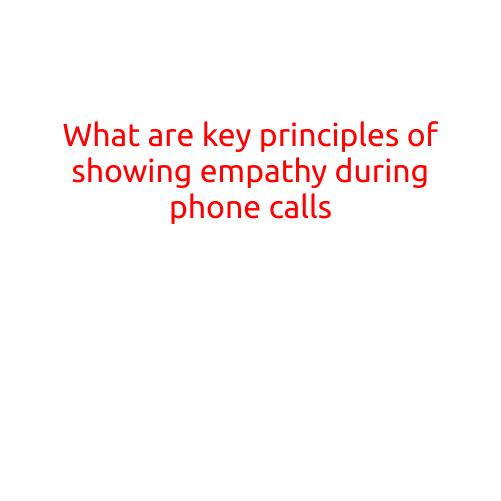
What is the Best Way to Avoiding Misunderstandings on the Phone?
In today’s digital age, the phone has become an essential tool for communication. With the rise of mobile devices, we are more connected than ever, and phone conversations are a common way to stay in touch with friends, family, colleagues, and clients. However, with the convenience of phone calls comes the risk of misunderstandings. Miscommunications can lead to frustration, anxiety, and even damaged relationships.
Thus, it is essential to develop effective communication skills to avoid misunderstandings on the phone. In this article, we’ll explore the best ways to prevent miscommunications and ensure effective phone conversations.
1. Prepare Before the Call
Before making a call, take a few moments to prepare yourself. Choose a quiet and comfortable space where you can focus on the conversation. Make sure you have all the necessary information, documents, or notes ready. This will help you stay focused and avoid distractions.
2. Start with a Clear Introduction
When answering a call or initiating a conversation, start with a clear introduction. Introduce yourself, state the purpose of the call, and establish the agenda. This sets the tone for the conversation and helps avoid misunderstandings.
3. Speak Clearly and Slowly
Speak clearly, slowly, and with conviction. Avoid mumbling or speaking quickly, as this can lead to misunderstandings. Pause occasionally to allow the other person to process what you’re saying.
4. Use Clarity and Transparency
Use simple and concise language when conveying your message. Avoid using jargon or technical terms that may be unfamiliar to the other person. Be transparent and straightforward in your communication to avoid confusion.
5. Ask Open-Ended Questions
Instead of asking yes/no questions, ask open-ended questions that encourage the other person to share their thoughts and opinions. This helps to clarify any misunderstandings and promotes a deeper understanding of the topic.
6. Clarify and Confirm
After discussing a particular point or topic, clarify and confirm your understanding with the other person. Repeat back what you’ve understood to ensure you’re on the same page.
7. Avoid Interrupting
Avoid interrupting the other person while they’re speaking. Allow them to finish their thoughts and opinions before responding. Interrupting can lead to misunderstandings and create a sense of frustration.
8. Use Nonverbal Cues
Use nonverbal cues such as nodding, smiling, and encouraging gestures to show you’re actively listening and engaged in the conversation. This helps to build trust and creates a positive tone for the conversation.
9. Be Patient and Empathetic
Be patient and empathetic during the conversation. Put yourself in the other person’s shoes and try to understand their perspective. Avoid becoming defensive or dismissive, as this can escalate misunderstandings.
10. Follow Up
After the call, follow up with an email or a summary of the conversation to ensure you’re both on the same page. This helps to prevent misunderstandings and ensures a smooth resolution of the topic.
Conclusion
By following these simple tips, you can significantly reduce the risk of misunderstandings on the phone. Remember, effective communication is key to avoiding misunderstandings. By being prepared, clear, and empathetic, you can ensure successful phone conversations that build trust and foster strong relationships.





